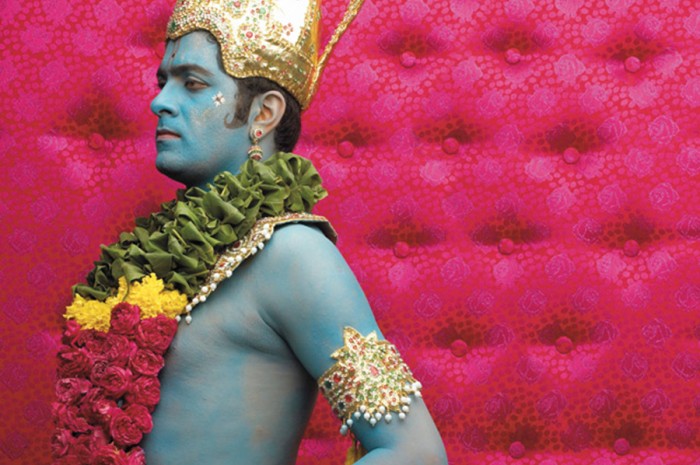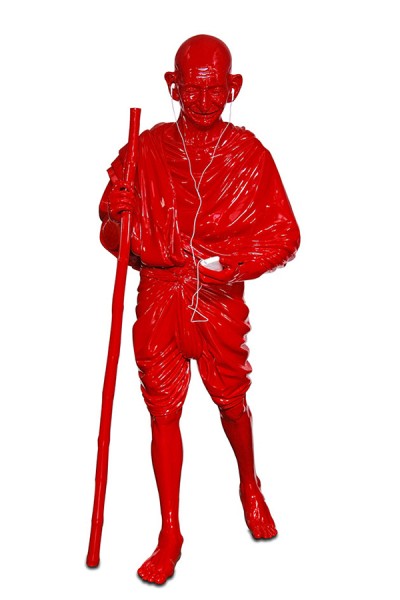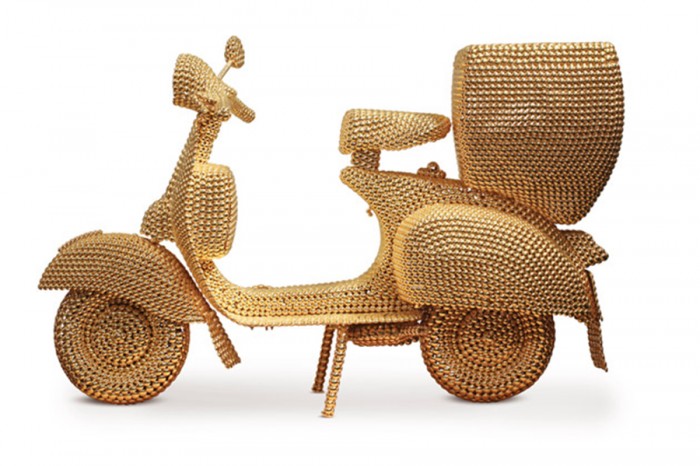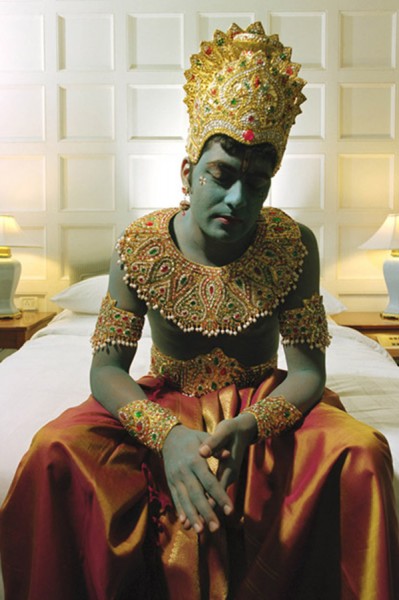
The aspirations, traditions, obsessions and everyday rituals of India’s people will be brought to life in installations and images at the Seattle Art Museum from now until mid-February.
SAM’s latest exhibition, “City Dwellers: Contemporary Art from India,” represents 12 artists from several of India’s major cities, reflecting the fast-changing urban landscape of the nation and critical responses from its people.
“In the last 15 to 20 years, a vibrant new art scene has been developing in India, and photography is at the forefront of some of the most intriguing developments,” says City Dwellers curator Catharina Manchanda. “The theme presented itself after seeing the country, and especially the cities changed rapidly since the 1990s, a subject that many of the artists are investigating with a probing eye.”
Present-day Indian politics, celebrity culture, Hindu mythology and technology interact, but never quite merge in the exhibit. This aptly presents a fractured continuum of India’s radical evolution.
The photographs by Pushpamala N. and British artist Clare Arni in the series “Native Women of South India: Manners and Customs” are performances that re-stage existing images of popular icons and incidents. N. and Arni offer a profound critique of female role models and stereotypes, raising questions about “the histories of female representation, high and low art, ethnography and ideas of race and caste, colonialism and Indian modernity — and the history of modern Indian art and photography itself,” according to N., who works both in front of and behind the camera for the exhibit.

Debanjan Roy’s bright red sculpture of Gandhi — meant to remind viewers of Gandhi’s assassination and the violence that resulted from it — is impossible to miss in the gallery. The work, “India Shining V (Gandhi with iPod),” depicts the anachronism of a popular political leader of India’s struggling past to its bright and commercialized present.
Gandhi’s allegiance to austerity strongly contrasts with an “iPod Nation,” one moving towards materialism and technology. This urges viewers to re-evaluate traditional values of the country and the legacy of the father of India.
Complimenting Roy’s red is Valay Shende’s “Scooter” in gold. The iconic mode of transportation, for lower-middle class families, the scooter is an economical alternative to a car. It is a common sight to see the two-seater crowded with kids between the “father” and “mother’s” seats. Many families use the cost and fuel-efficient vehicle to maneuver the traffic-congested roads of India. To see the scooter in a glorious presentation is a fitting tribute to the icon’s ubiquity.

Nandini Valli Muthiah’s cinematic presentation of Krishna, from the series “Definitive Reincarnate” would remind Indian Americans, especially from the South of India, the tradition of representing gods in calendars. In her work, Muthiah tries to depict the human side of the god by way of emotions, stylization and presentation. A tired Krishna sitting on what appears to be a hotel bed, feels like the end-of-the-day reaction of a busy god, much like us mortals at the end of a day’s job.

Alwar Balasubramaniam’s sculpture — divided by a wall — is cast from his own body. The piece, “Untitled (Self in Progress)” resonates with the Hindu and Buddhist belief in reincarnation, and with it, the spiritual development of a self in progress.
In her series, “Ladies of Calcutta,” Dayanita Singh captures how the upper-middle class women of Kolkata express attitudes toward the cultural changes of the day in their generational relationships, clothing and home decor. Singh’s photograph of Sati Guptoo epitomizes the West Bengal lady in her traditional attire and bunch of keys tied to the end of the pallu of her sari. Guptoo’s grit comes through in a pose of pride and defiance.
“The man in the sola hat,” a photo of a man looking at the sea in Sooni Taraporevala’s series “Parisis: The Zoroastrians of India” strikes a chord and a balance between reflecting the universal, everyday rituals of Mumbaikar life and the experiences of Zoroastrians, a diminishing religious minority group in Mumbai. Taraporevala spent more than 25 years capturing and immortalizing the lives of modern Zoroastrians, whose people fled to India from Persia more than 10,000 years ago.
Covering most of India’s metropolises, “City Dwellers” is an exhibition worth visiting, setting viewers afoot in the chaos of modern India as it reconciles sweeping cultural shifts with its ancient roots and values.
The exhibition runs through Feb 15th of 2015. Get your tickets in advance or learn more about related events held in October at http://tickets.seattleartmuseum.org.
Support related programming for “City Dwellers” by contributing to their Indiegogo campaign.

